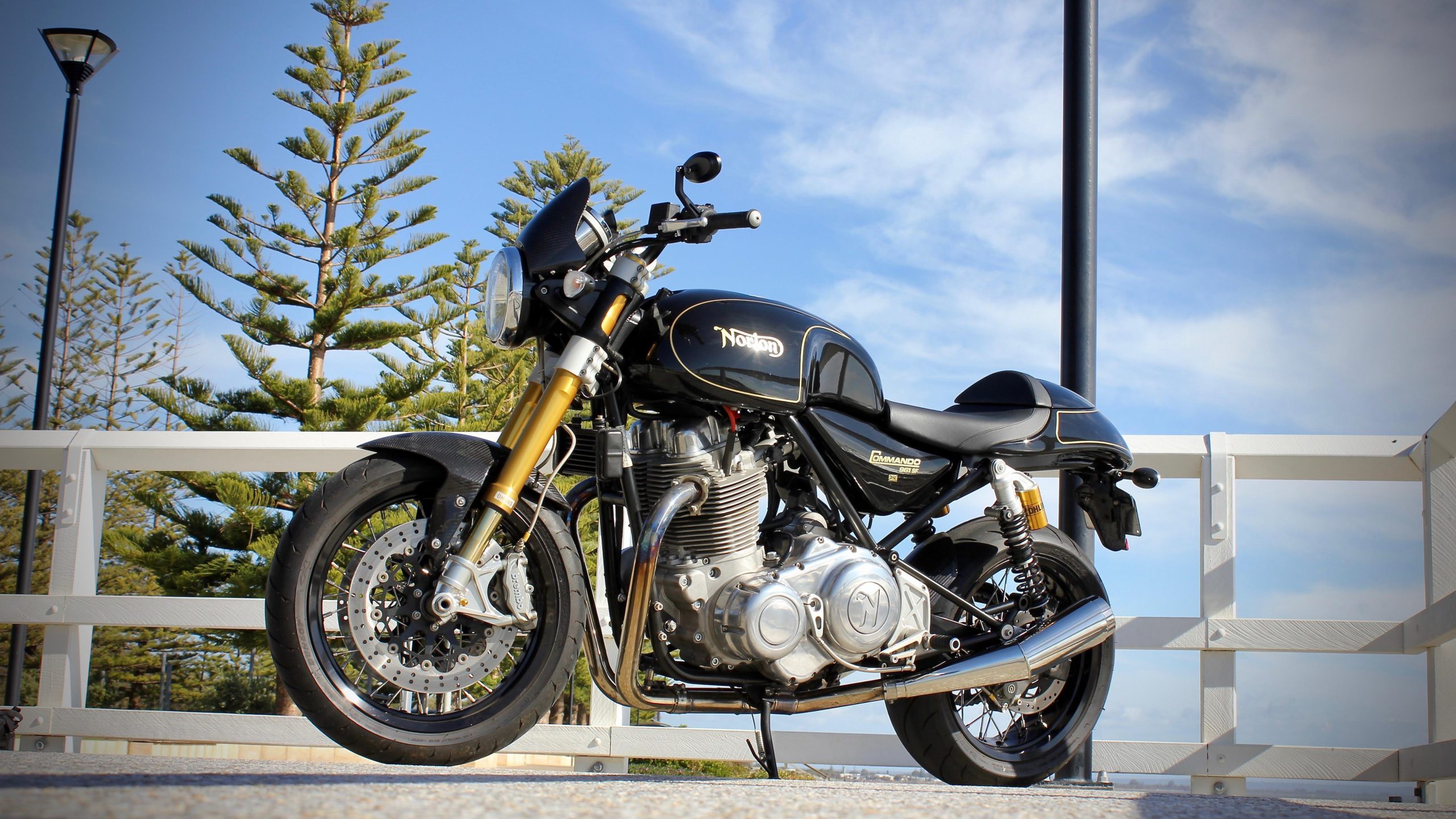
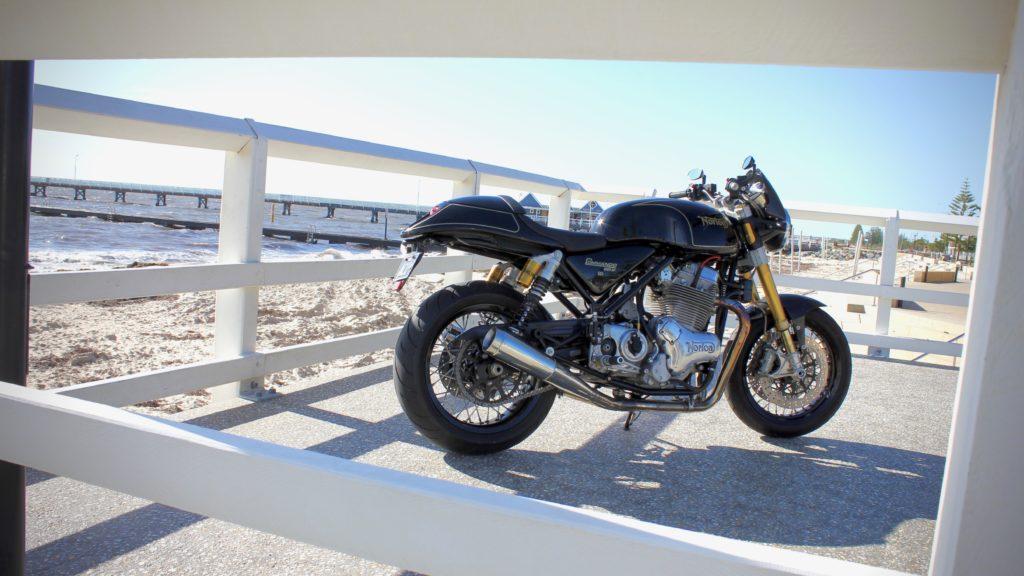
When DAN TALBOT fulfilled a life-long dream and bought himself a new Norton Commando, he was expecting bliss. But he didn’t get it. In fact, in his words, the bike was “horrible”. It seems the chaps who made the engine run properly had an arm-wrestle with the chaps who made it clean and legal — and the clean-and-legal guys won (as always). Dan figured there was only one thing to do; trace the problem to its source, all the way back to England, and get it sorted.
OWNER’S REPORT
THIS story has been a long time in the making. A very long time.
Back in the 1970s, I owned a Triumph Bonneville and a mate had a 750 Norton Commando. Occasionally we would swap bikes and straight away I felt the attraction of well-sorted Commando. I would have preferred not handing the bike back and vowed: one day I would own a Commando.
And now I do.
I bought my 2015 Norton Commando 961SF (Street Fighter) early in 2018. The bike was unlicensed — indeed, it had never even been registered. I would have liked to write this owner’s report long before now but it’s taken the best part of six months and a trip to the Norton factory to get to this stage.
At the time of purchase, my bike had spent the majority of its short life on a plinth in a living room. I was welcome to start it up and hear the engine run, filling the said living room with exhaust waste, but I was unable to take the bike for an actual test ride.
The engine surged and misfired under 3,000rpm, and wasn’t much better above it. It was horrible.
In hindsight, had I been able to ride the Norton I probably would not have bought it because when I finally did get to take it out on the road I was immediately disappointed with the performance of the big twin. The engine surged and misfired at anything under 3,000 rpm and wasn’t so good above that range either. Put simply, it was horrible.
With no distributor on the West Coast or, at that time, anywhere in Australia, I had to rely entirely on my own skills to tune and fettle the engine. I’m okay with basic mechanics and by modern standards the Norton is a fairly basic engine, aside from the fuel injection and associated engine control unit (ECU), so I figured I would be okay.
Big mistake.
The more I researched running problems associated with the new Norton twins the deeper the quagmire of responses grew. Opinions are like … well, you know the rest. The art of modern mechanics is learning from other’s mistakes, making a few of your own and delving beyond the white noise before you can make some sweet noise. And that’s basically the problem.
Like other manufactures of big twins, Norton suffer stringent emission control laws that stifle any semblance of performance, or even smooth running. Noise is an emission – of which not too much can be emitted. Motorcycles are designed to perform by one department within the structure of modern motorcycle development and neutered by their colleagues down the hallway.
The horsepower guys want us all to enjoy the performance of their creation, while those charged with meeting licensing regulations want to ensure their product makes it through licensing. From my observations hallway diplomacy favours the emission guys for without them we have no usable product.
In my ever-increasing bid to refine my new twin I replaced the coils, spark plug leads, spark plugs, cam position sensor and cleaned the fuel circuit of the detritus that was once petrol. The bike improved but, in the back of my mind, I knew I would eventually have to hand over my bike to someone versed in the art of computer science. To me, fuel circuit mapping should be the proclivity of NASA but unfortunately it’s something we live with every time we start an engine that has been manufactured this century.
NASA weren’t available so instead I went to Norton with my ECU in one hand credit card in the other. That’s Norton in the UK; a heck of a long way from Western Australia.
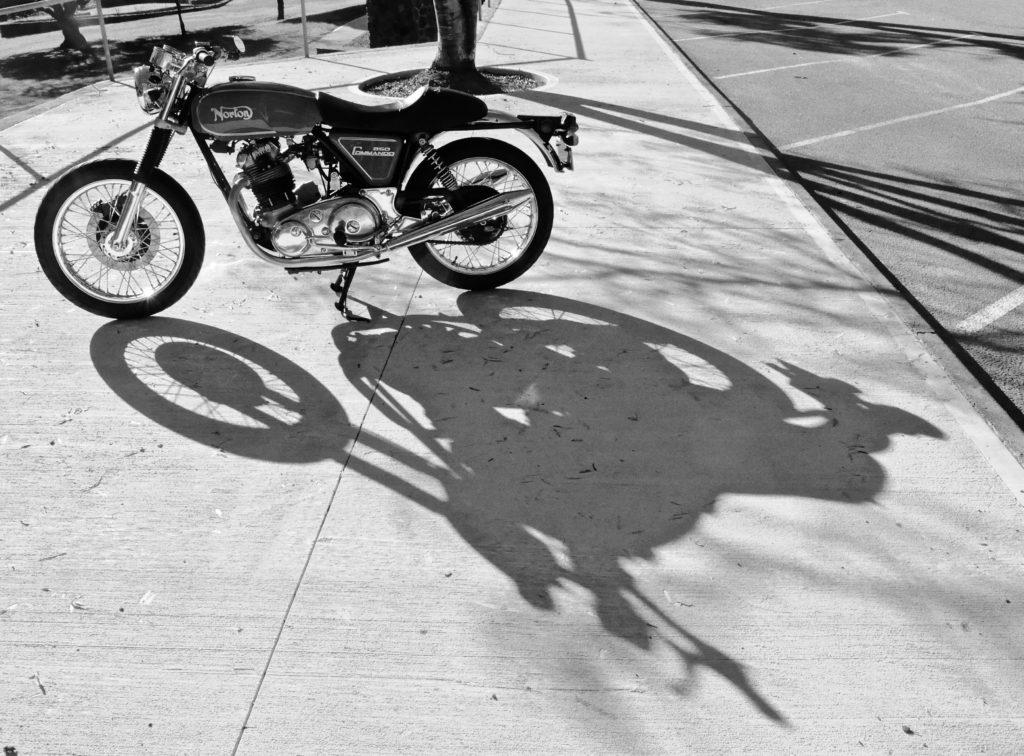
I decided to collect two sports mufflers from Norton and have the ECU mapped to suit, and I wasn’t disappointed — my new mufflers were waiting for me at reception, bubble-wrapped and ready to be stowed in my suitcase ahead of our flight home. The combined weight of the two sparkling new, stainless mufflers was less than 5 kg (which enabled me to also pack a new barrel and pistons for one of my other bikes). My ECU was remapped while my wife and I sat in the waiting room with a Norton used in a recent James Bond movie as company.
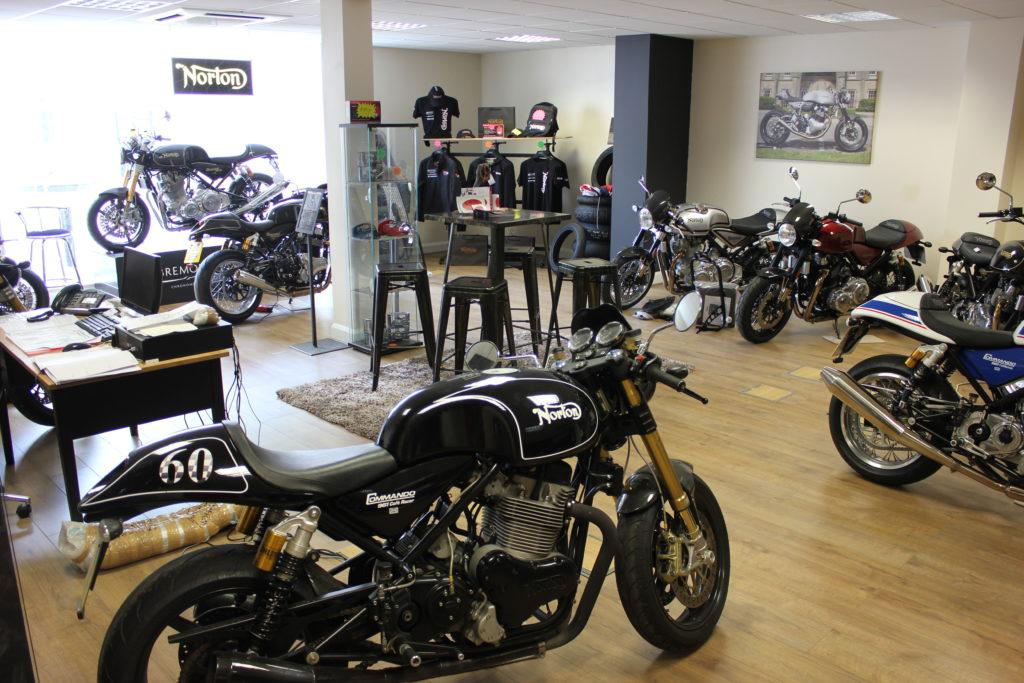
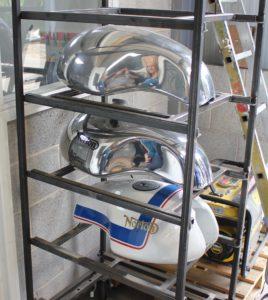
Nortons are no longer assembled in dank, drafty sheds in Birmingham. The new facility is something akin to Downton Abbey. Outside, Donington Hall looks like a manor house. Inside it is a modern, slick operation that reassures me thatr the future of Norton is in good hands. Donington Hall is wedged on a parcel of land between Donington Racing Circuit and Castle Donington, a small town of about 6,000 inhabitants in Leicestershire, England.
So plush is the facility, Norton CEO Stuart Garner actually lives there. Stuart’s Aston Martin, bearing the numberplate NOR7ON (sic), sits immediately outside his apartment. Until recently, Aussie road racing star Davo Johnson also lived there.

A tour of Norton’s operations confirmed some things I already knew, such as the frames now being put together by the remnants of the Spondon specialist motorcycle frame-builders, and revealed a lot more that I didn’t. Most excitingly the pending release of a 650cc twin (which I’ve already promised my wife I will buy for her).

We were shown through the facility while it was in full swing. Workers were poring over 961 twins – of which there were three on the production line. This is a small outfit which produces about two bikes per day but changes are afoot. The factory is about to swing into gear with a new 1200cc V4. Prototypes are proudly displayed and customers can be secure one of the 200+ hp superbikes with a 10% deposit ($6,000 to $9,000 depending on the variant you chose).
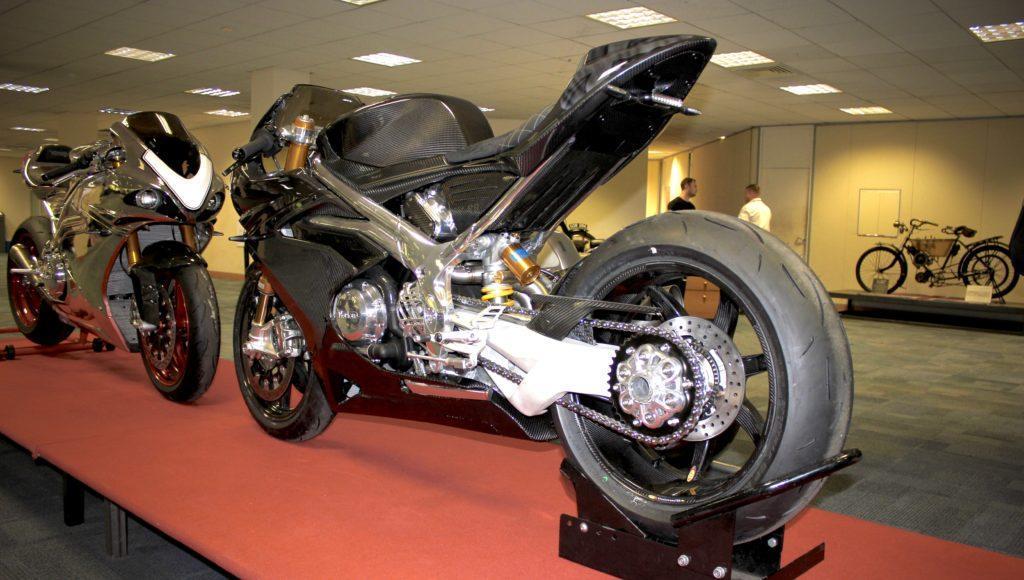
Back to the 961 twin, let’s take a look at what the new Norton offers. The frame design is almost a cross between a traditional cradle style and the more sporty trellis frames. It has a double cradle that extends down from the steering head, under the engine and links to the swing-arm pivot, but a semi-trellis arrangement takes over responsibility in the top section.
The frame should be called ‘Bigfoot’ — it has a great grip on Mother Earth
Norton are famous for building motorcycle frames – they had the Garden Gate, Featherbed and Isolastic. Perhaps this one should be called “Bigfoot” because it sticks to Mother Earth with a determination that I have seldom experienced in any other machines. The lithe, narrow design is pure artisan. Such is the workmanship you can even order a frame finished only in clear power-coat, displaying blotchy welds like a cross between battle-scars and birthmarks.
On the goat tracks that pass as roads in Western Australia, the Norton frame and its retro twin-shock set up works brilliantly. It would take a better man than me to require anything more. Up front, in a nod to original Norton forks, the Ohlin forks on the 2018, 50th anniversary models, actually sport a ‘Roadholder’ badge. Roadholder forks are famous for their handling characteristics and still find favour with people building classic bikes so it’s a bit of a treat seeing the famous Roadholder badge stuck to Swedish forks!
The designers have reached a pleasing symmetry between engine and frame. The frame is slim and the engine tall which makes the bike feel large. At 6’ 3” the bike fits me perfectly and my feet are easily planted on the ground but shorter people might not feel so comfortable. However, any thoughts of comfort would likely be lost when the big twin is spun into life.

In engine layout, 270 degrees is the new black. Triumph have been doing it for a while, the new Royal Enfield 650 will have it and Yamaha have known it for decades in their 850 parallel twins. Manufacturers have come to understand the value in firing a twin at 270 and 450 degrees, emulating the characteristics of a Ducati L twin, namely a much smoother and more useful spread of power than the previous 360 degree firing order the British twins are known for.
The result is a great lump of almost 1000cc in a parallel twin that is usable, sounds awesome and won’t (quite) shake the rider to pieces. The Norton has a balance shaft but it still vibrates — and vibrations might not be everyone’s cup of Early Grey. If you love a silky-smooth, multi-cylinder bike you’ll probably not enjoy the Norton.
Out on the road, in top gear I find I’m frequently looking for another cog. It’s early days for me and the Norton but I do wonder, in this day and age where six speeds are the norm, why Norton has stuck with a five-speed transmission. With only five gears it’s easy to be too high a gear coming out of a bend, the engine labours and whilst it might get by with feathering the clutch it makes for sloppy riding.
Speaking of labouring the engine, it’s gut-wrenching to hear the big engine clunking along at anything under 3,000 rpm and she doesn’t really come good until 4,000. From there to red line it comes alive and takes us to that special fun place big twins are renowned for.

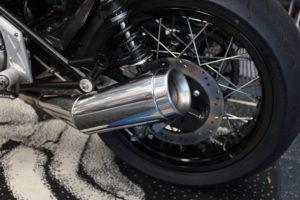
My new mufflers have been a very good investment. Combined with the re-mapped ECU, the engine now runs smooth and clean. The jerkiness of the over-lean ECU is gone, as is the strangled sound previously emitted from the large pea-shooter style, stock mufflers.
If I have one criticism, I’m not sure why the pea-shooter could not be replicated in the sports muffler, instead of the stubby tubes the factory produces.
That aside, the sound coming from those stubby tubes is sublime. On over-run the choirboys give it their best baritone and the sound is amazing. It’s enough to have me pegging the bike just to hear the bellow and growls the big twin makes. I know — I sound like a teenager.
All in all, I’m well pleased with the bike as it is now. It’s taken a bit to get it to this stage and one might well ask if it’s worth it, when I could have purchased a new 1200 Bonneville and saved bucket loads of money. The answer is; absolutely. This is one Street Fighter that can now land a blow.

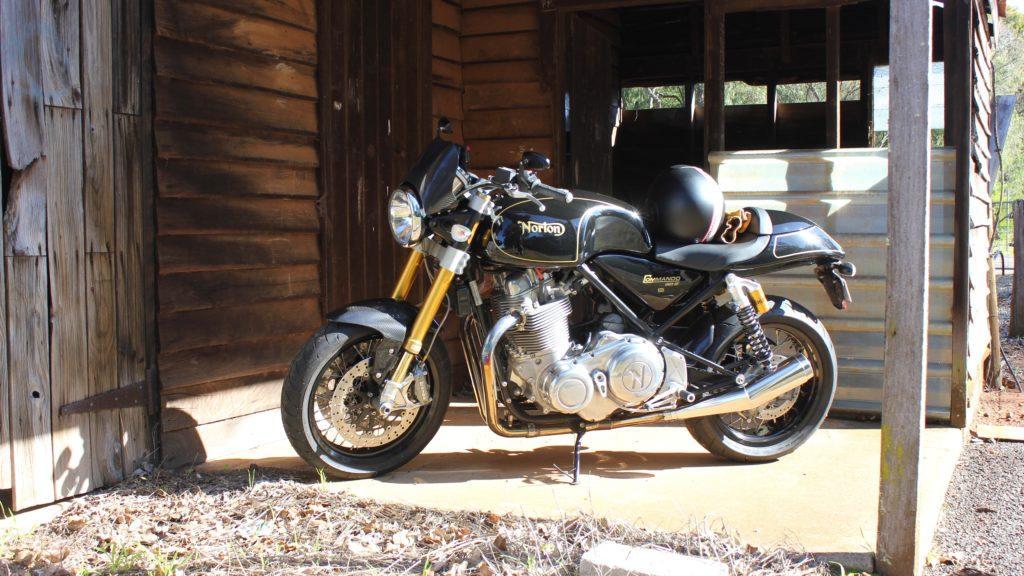
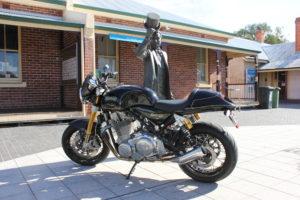
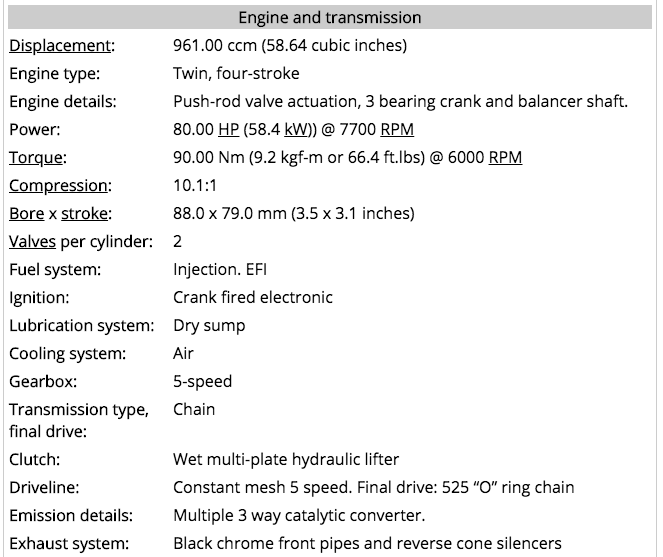

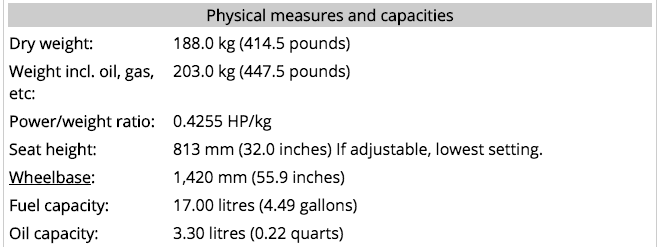

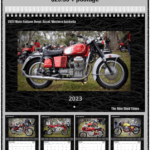

How many $AUD?
Dan wouldn’t tell us how much he paid for his, but we understand the new retail price was around $AU40,000.